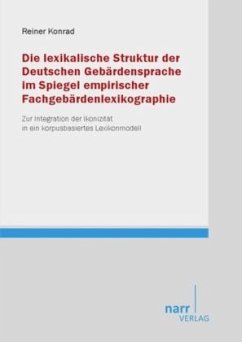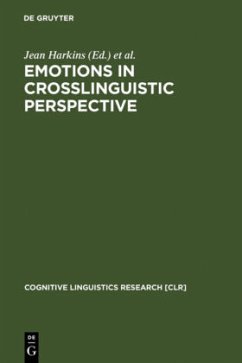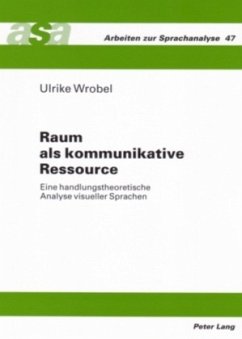Nicht lieferbar

Iconicity and Verb Agreement
A Corpus-Based Syntactic Analysis of German Sign Language
Versandkostenfrei!
Nicht lieferbar
In many sign languages around the world, some verbs express grammatical agreement, while many others do not. Curiously, there is a remarkable degree of semantic overlap across sign languages between verbs that do and do not possess agreement properties.This book scrutinizes the interaction between semantic and morphosyntactic structure in verb constructions in German Sign Language (DGS). Naturalistic dialogues from the DGS Corpus form the primary data source. It is shown that certain semantic properties, also known to govern transitivity marking in spoken languages, are predictive of verb type...
In many sign languages around the world, some verbs express grammatical agreement, while many others do not. Curiously, there is a remarkable degree of semantic overlap across sign languages between verbs that do and do not possess agreement properties.
This book scrutinizes the interaction between semantic and morphosyntactic structure in verb constructions in German Sign Language (DGS). Naturalistic dialogues from the DGS Corpus form the primary data source. It is shown that certain semantic properties, also known to govern transitivity marking in spoken languages, are predictive of verb type in DGS, where systematic iconic mappings play a mediating role. The results enable the formulation of cross-linguistic predictions about the interplay between verb semantics and verb type in sign languages. An analysis of the morphosyntactic properties of different verb types leads up to the conclusion that even 'plain' verbs agree with their arguments, where iconicity again plays a crucial role.
The findings motivate a unified syntactic analysis in terms of agreement of constructions with verbs of all types, thus offering a novel solution to the typological puzzle that supposedly only a subset of verbs agree in DGS and other sign languages.
This book scrutinizes the interaction between semantic and morphosyntactic structure in verb constructions in German Sign Language (DGS). Naturalistic dialogues from the DGS Corpus form the primary data source. It is shown that certain semantic properties, also known to govern transitivity marking in spoken languages, are predictive of verb type in DGS, where systematic iconic mappings play a mediating role. The results enable the formulation of cross-linguistic predictions about the interplay between verb semantics and verb type in sign languages. An analysis of the morphosyntactic properties of different verb types leads up to the conclusion that even 'plain' verbs agree with their arguments, where iconicity again plays a crucial role.
The findings motivate a unified syntactic analysis in terms of agreement of constructions with verbs of all types, thus offering a novel solution to the typological puzzle that supposedly only a subset of verbs agree in DGS and other sign languages.














